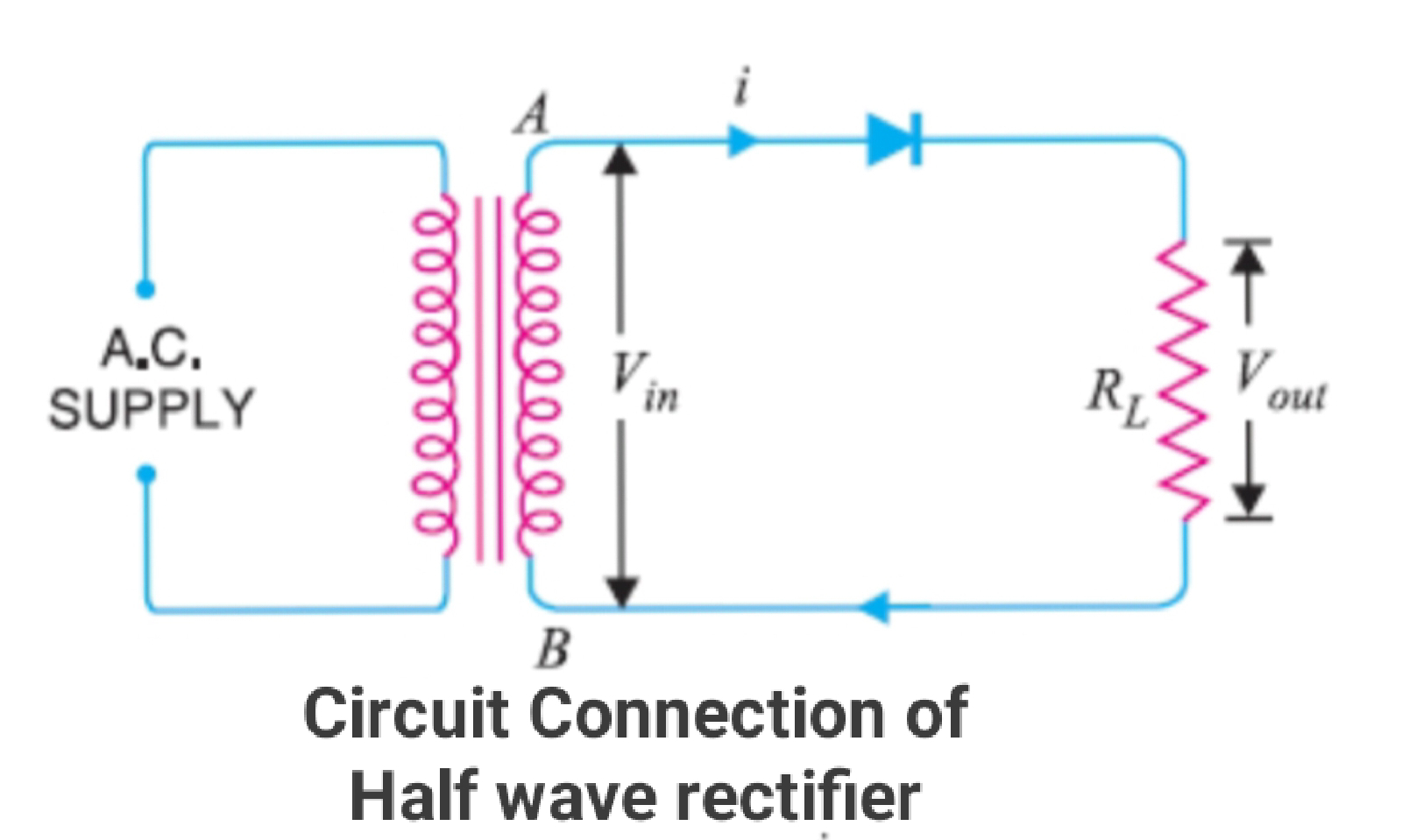What is rectifier?
A rectifier is an electrical device that converts alternating current (AC), which periodically reverses direction,to direct current (DC),which flows in only one direction.This process is known as rectification.
A high AC voltage is applied to the primary side of the step down transformer & it will get a low voltage, which will be applied to the diode. During the positive half cycle of the AC voltage,the diode will be forward biased, for an ideal diode, the forward voltage drop is zero.So the whole input voltage will appear across the load resistance.
During the negative half cycle of the AC voltage,the diode will be reverse biased & the current flow will be blocked. Then we found only half cycle dc voltage.
(2) Full wave rectifier - Full wave rectifier is a device which convert complete cycle of AC into pulsating DC.The lower efficiency drawback of half wave rectifier can be overcome by using full wave rectifier. During positive half of the input signal, anode of diode D1 becomes positive & at the same time the anode of diode D2 becomes negative. Hence ,D1 conducts & D2 don't conduct. The load current flows through D1 & the voltage drop across load resistance will be equal to the input voltage.
During the negative half cycle of the input, the anode of D1 becomes negative & the anode of D2 becomes positive. Hence, D1 don't conduct & D2 conducts. The load current flows through D2 & the voltage drop across load resistance will be equal to the input voltage.
(3) Bridge Rectifier - Bridge rectifier is a device that convert alternating current(AC) into direct current(DC) using diode arranged in the bridge circuit configuration. When the positive half cycle of the input supply is given, point P becomes positive with respect to the point Q. This makes the diode D1 & D3 makes forward biased, while D2 & D4 reverse biased.These two diode willnow be in series with the load resistor. When the negative half cycle of the input supply is given, point P becomes negative with respect to Q.This makes the diode D2 & D4 makes forward biased , while D1& D3 reverse biased. These two diode will be in series with the load resistor.Ripple Factor - the ratio of rms value of ac component to the dc component is known as ripple factor.
Efficiency - The ratio of dc output power to ac input power is known as rectifier efficiency.
Comparison of rectifiers -












Comments
Post a Comment